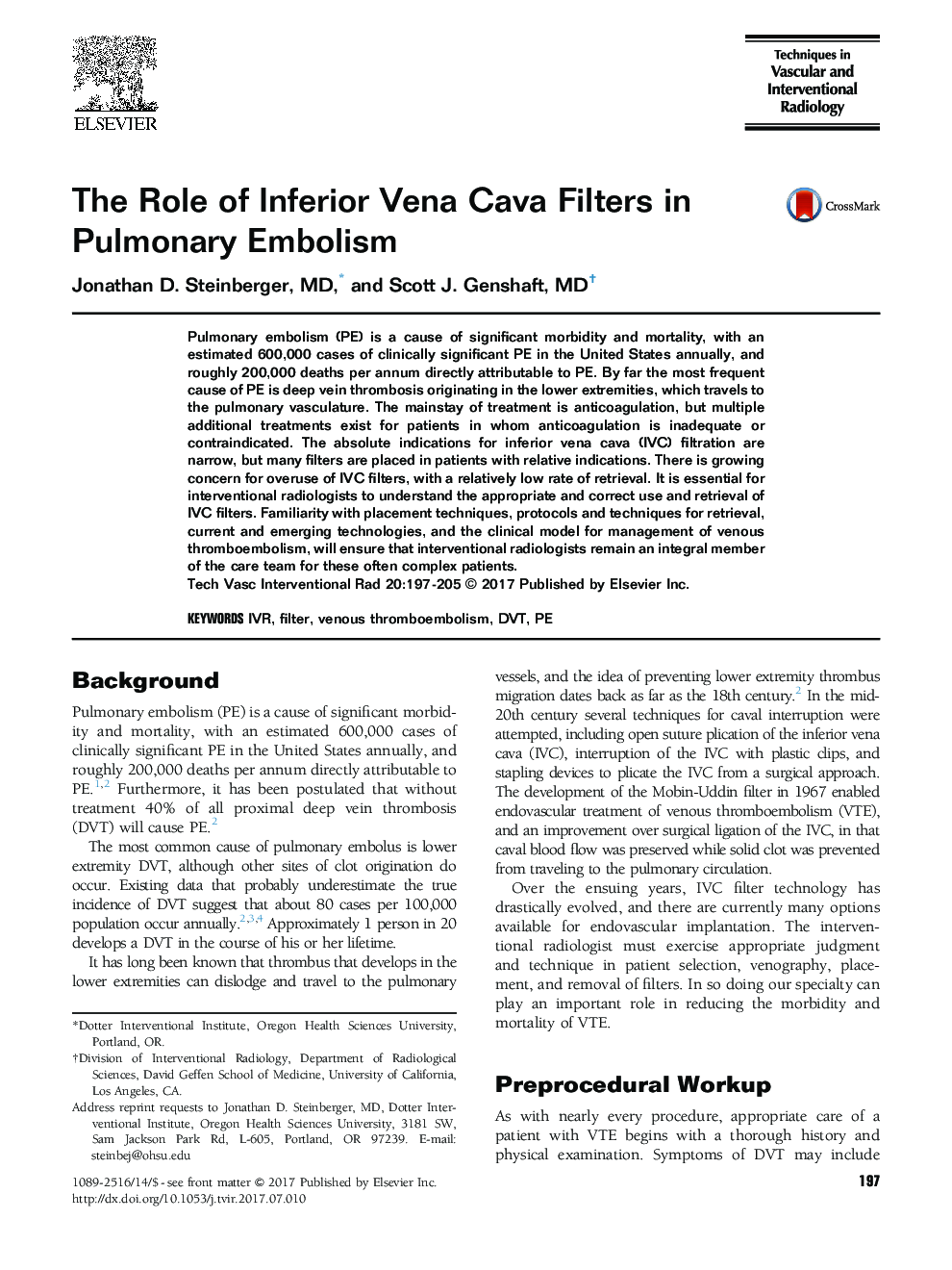| Article ID | Journal | Published Year | Pages | File Type |
|---|---|---|---|---|
| 5728378 | Techniques in Vascular and Interventional Radiology | 2017 | 9 Pages |
Pulmonary embolism (PE) is a cause of significant morbidity and mortality, with an estimated 600,000 cases of clinically significant PE in the United States annually, and roughly 200,000 deaths per annum directly attributable to PE. By far the most frequent cause of PE is deep vein thrombosis originating in the lower extremities, which travels to the pulmonary vasculature. The mainstay of treatment is anticoagulation, but multiple additional treatments exist for patients in whom anticoagulation is inadequate or contraindicated. The absolute indications for inferior vena cava (IVC) filtration are narrow, but many filters are placed in patients with relative indications. There is growing concern for overuse of IVC filters, with a relatively low rate of retrieval. It is essential for interventional radiologists to understand the appropriate and correct use and retrieval of IVC filters. Familiarity with placement techniques, protocols and techniques for retrieval, current and emerging technologies, and the clinical model for management of venous thromboembolism, will ensure that interventional radiologists remain an integral member of the care team for these often complex patients.
